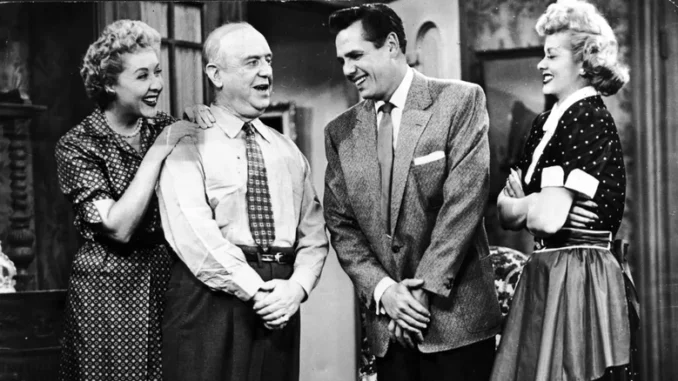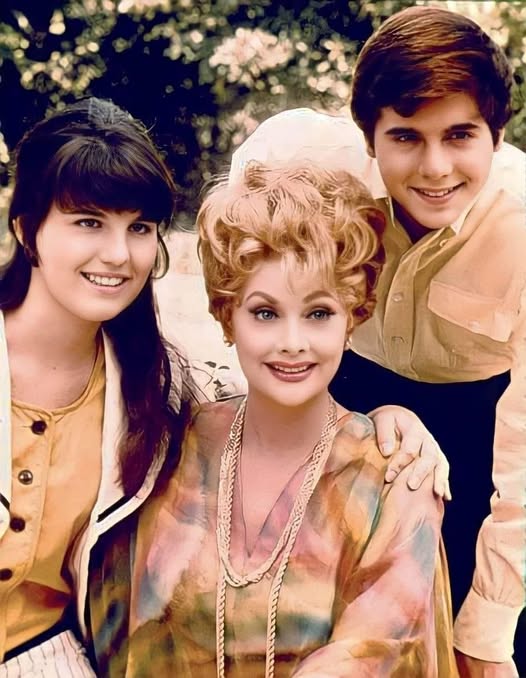
It’s almost impossible to imagine I Love Lucy inspiring hate. The show has long been revered as one of television’s most flawless comedies — a series that defined the sitcom format and still pulls in millions of views across streaming platforms today. But even the brightest gems have a few cracks, and among Lucy’s 180 episodes, there’s one that fans consistently rank as the “most hated.” What makes it fascinating is that the episode in question isn’t one of the show’s more outlandish experiments — it’s one that tried to do something sincere.
The episode is “Lucy Goes to Scotland,” from Season 5. On paper, it had all the makings of a classic: a dream sequence, elaborate costumes, and Lucille Ball doing her signature physical comedy. But for many fans and critics, it crossed the line from whimsical to absurd — and not in the way the show usually excelled at.
In the episode, Lucy dreams that she’s “Lucy MacGillicuddy,” trapped in a medieval Scottish castle ruled by a clan of bagpipe-wielding ghosts. It’s a far cry from the grounded mischief of New York housewife Lucy Ricardo. The surrealism, combined with exaggerated accents and heavy makeup, left some viewers bewildered rather than amused. Even Ball herself later admitted it wasn’t one of her favorites.
So why does “Lucy Goes to Scotland” stand out as the most divisive? The answer lies in the delicate balance that I Love Lucy always managed to maintain — a mix of fantasy and reality, chaos and charm. The episode broke that balance. Instead of a relatable domestic escapade, audiences got something that felt more like a stage parody than a sitcom. For a show built on everyday absurdities — like hiding a giant loaf of bread or pretending to be a ballerina — the episode’s dream logic felt off-brand.
Still, it’s worth remembering that the episode’s production was ambitious. The costumes alone were among the most expensive in the series’ history. Lucille Ball wore an elaborate tartan gown, and the dream sequence featured multiple musical numbers. The studio audience reportedly loved it during filming, but the broadcast response told a different story. Letters poured in from viewers who missed the “real Lucy.” Critics accused the episode of straying too far from what made the show special: its slice-of-life relatability.

Decades later, “Lucy Goes to Scotland” has developed a strange second life. Some fans now defend it as a bold experiment — an early example of I Love Lucy pushing boundaries. Others still rank it near the bottom of every “Best Episodes” list, citing it as proof that even comedic legends can stumble.
Interestingly, Ball herself took the criticism in stride. In a 1965 interview, she said with a laugh, “If people only liked me when I was normal, I’d be out of work!” That comment reveals why the show still resonates: Lucille Ball wasn’t afraid to fail in front of millions. She trusted that her audience would love her even when the jokes didn’t land.
And maybe that’s why this “most hated” episode is actually essential to understanding I Love Lucy’s greatness. It shows the creative risks the team was willing to take — risks that paved the way for modern sitcoms like 30 Rock, Community, and Schitt’s Creek, which often blur reality and fantasy to hilarious effect.
In hindsight, “Lucy Goes to Scotland” isn’t a failure so much as a reminder that innovation always comes with trial and error. It’s a glimpse of a fearless comedian testing the boundaries of television long before anyone else dared to.
So yes — it might be the most hated episode. But it’s also one of the most important. Because in trying something new and strange, Lucille Ball proved the very thing that made her immortal: even when Lucy misses the mark, she never stops making us laugh.
